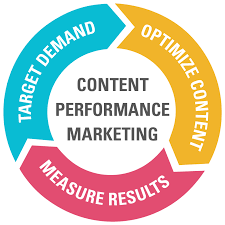 Content is king. Every internet marketer knows this. That’s why everybody invests in content. However, merely publishing tons of content is not enough. You must do it with intent. So, before you start content marketing, define your goals and monitor the impact of your content marketing efforts on a regular basis. If you find you are falling short of your target, then re-strategize to make your content more effective.
Content is king. Every internet marketer knows this. That’s why everybody invests in content. However, merely publishing tons of content is not enough. You must do it with intent. So, before you start content marketing, define your goals and monitor the impact of your content marketing efforts on a regular basis. If you find you are falling short of your target, then re-strategize to make your content more effective.
But how do you really measure your content marketing performance?
Here are four important metrics you must measure your content on, as well as tips on how to do that.
Site Traffic
Your content should help you increase site traffic. If it’s failing to do that, you must rethink your content marketing strategy. More traffic can help boost your bottom-line. After all, more viewers mean more paying customers.
So how can you measure page views?
The easiest way to do monitor site traffic is by using Google Analytics. Other tools that do this with great accuracy are also available. It’s up to you how you measure page views. What’s most important is that you take a measure on a regular basis. If you don’t monitor this value, you might never know how effective you content is.
Bounce Rate
While healthy organic site traffic is paramount, it alone doesn’t guarantee success. You may think I’m contradicting myself considering what I said above, but I’m not. Let me explain with an example.
Let’s say you manage to increase daily page views from 500 from 1000, but 950 visitors leave your site within a few seconds. In such a case, as you may guess, high traffic will not do you much good. To succeed, you need more traffic and a low bounce rate, which shows the percentage of total site visitors who leave your site after viewing the first webpage.
Many factors affect bounce rate, with content being one of them. If your content is irrelevant to visitors, they will abandon your site right away and go to another, with better content. Also, high bounce rate means you will get fewer opportunities to promote customer engagement. Worse, it might give your brand a bad image, because if viewers are not happy with their site experience, they may share their feedback on social media and review sites.
You can use Google Analytics to measure your bounce rate. In case of a high bounce rate, review your content and make the necessary improvements. However, keep in mind that a high bounce rate doesn’t necessarily mean poor content. Other factors, especially site speed, can cause bounce rate to climb up menacingly, even if your content is first-rate.
As a matter of fact, slow page loading time affects bounce rate more than content quality, something which the following infographic shows all too clearly. As you can see from it, pages that load slowly have seriously high bounce rate. For instance, a site that takes 6 seconds to load has a 106% more bounce probability than a site with a loading time of 1 sec. For a site with 10 seconds load time, this figure is 123%. In case of a high bounce rate, you must rule out slow speed as main cause before reviewing your content’s relevancy.
Check your site load time on different devices, like a desktop PC, smartphone, and tablet, and if it is more than 3 seconds, take measures to bring the site load time down.
There are many online tools like GTMetrix or Google PageSpeed Insights that give a detailed picture about the speed of your site. They measure all aspects of the frontend speed and break down the choking points, while providing practical advice how to sort the issues.
The most common problems are large images, lack of caching, poor coding, and slow servers. Practically all those can be avoided easily. Use a tested CMS (with top quality theme) like WordPress or Joomla, run plugins for image optimization and caching, and choose a top quality hosting provider through proper research.
The hosting experts over at the Hosting Tribunal can help you with real-time data and in-depth analyses that rank the official WordPress hosts Bluehost, SiteGround, and DreamHost among the best options for this popular CMS.
Social Shares
Unless you’ve spent the last few years under a rock, you would be aware that social media has a huge role to play in your online success.
With three of the top 10 most visited sites being social media sites, a handsome increase in social shares can take your business to the next level. More social shares can elevate your personal brand, improve brand awareness and organic traffic, and boost customer engagement.
Informative and entertaining content is the key to getting more social shares, which you can measure using a free tool, such as Muck Rack, BuzzSumo, Twitomony, Twopcharts, and Social Mention.
Email List Subscribers
Another metric you should track to gauge your content’s impact is your email list growth rate. If the number of new subscribers is significantly greater than the number of unsubscribes and bounces, you are doing well.
There are many sites that throw a pop-up about joining their email lists the moment visitors land on their sites. Such tactics rarely, if ever, work, because you are demanding something from visitors without offering them anything in return. You must offer customers relevant content, which addresses their potential pain points above all, to convince them to join your email list. Remember, customer engagement is all about giving and taking.
To measure the email list growth rate, use this simple formula.
List Growth Rate = (New Subscribers – (Unsubscribers + Hard Bounces)) / List Size

Conclusion
To sum it up, if you don’t measure your content marketing performance, you may well be wasting much of the energy, time and money that you are putting into publishing content. Use these simple tips to monitor the effectiveness of your content on a regular basis and optimize whatever is needed.







